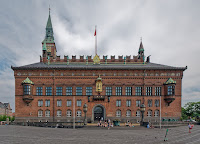My posts on Micro Four Thirds are really just an archive of my experiences using this camera system for me to pen down my experiences and maybe learn from some readers too.
As the free disk space in my previous blog was running out, I took almost half a year to set up this new blog to continue penning down my experiences. I'll still be updating the previous blog if I revisit the places I've recorded there, but any new places will be put into this new blog site instead.
In the summer of 2019, I took a holiday to Scandinavia.
Camera Body
I currently use the Panasonic GX9. It is one of the smallest of Panasonic's Micro Four Thirds system which has in-body image stabilization which I found crucial to get sharp shots in less-than-ideal lighting conditions.
This is an upgrade for me over the Panasonic GX85 that I still have and brought with me as a backup. The GX9 is ever so slightly bigger and heavier than the GX85, but its 20MP (vs. 16MP) sensor and overall faster processor just made it a better camera.
In-Body Image Stabilization
I tested the in-body image stabilization of my Panasonic GX9 by shooting waterfalls with longer (up to half a second) exposures. The images on the left below are taken using normal shutter speeds while those on the right were taken using longer shutter speeds.
Hand-held, that's more than enough to give a very different feel of the waterfalls, although I would attribute some of the lack of sharpness of the long exposure shots to the fact that I was at very small apertures of about f/16, where diffraction would cause some softness in the images.
Main Travel Lens - the Ultra-Wide Zoom
After using this camera system for more than 2 years, I find my most ideal main travel lens to be an ultra-wide zoom.
The ultra-wide angle is just able to capture more of the scene. This is useful not only in enclosed areas, but also useful in open areas to capture more of a landscape (for example).
A zoom is preferred over a prime so that I have the versatility of zooming in to a not-so-wide angle when I need to.
I currently have 2 ultra-wide zoom lenses - the Olympus 9-18mm, and the Panasonic Leica 8-18mm.
I'll use the Olympus when IQ is not critical. Its advantage is its compact size. But for my trip to Scandinavia, I really wanted the best IQ from my lens, and so I brought the Panasonic Leica 8-18mm. Nevermind the extra bulk/weight.
About 3/4 of my shots in Scandinavia were taken using this lens. Here's a sample of them:
Standard Zoom Lens
Sure. The 18mm of my 8-18mm ultra-wide lens doesn't have the reach when I want to really zoom in, so my other lens is a standard zoom.
Many Panasonic cameras came with the kit zoom in the 12-32mm f/3.5-5.6. It's small and compact, but doesn't have a very wide aperture (lets less light in). So I soon got myself the 12-35mm f/2.8, which is a "pro" lens which produces better images and has a constant wide aperture.
But for traveling, the 12-32/35mm is really a short zoom range, and doesn't let me zoom in much when I need to. So I got the Panasonic 14-140mm f/3.5-5.6 (right in the pictures below). This 10x zoom certainly gives me sufficient zoom range, but for trips which I wanted uncompromising IQ like this trip to Scandinavia, I would bring along the Panasonic Leica 12-60mm f/2.8-4.0 (left in the pictures below).
There's a little compromise in the Panasonic Leica lens in that its zoom range is only till 60mm, and I occasionally would have liked more reach. Also, it's slightly bigger and heavier than the other 2 lenses, but there's little practical differences between these 2 lenses to matter.
Here're some of the shots I took with the Panasonic Leica 12-60 f/2.8-4.0:
Cheerios!
Do support my blog by shopping through the following affiliate links:
Panasonic GX9:
Amazon UK:
eBay US:
eBay CA:
eBay UK:
Panasonic Leica 8-18mm f/2.8-4.0:
Amazon UK:
eBay US:
eBay CA:
eBay UK:
Panasonic Leica 12-60mm f/2.8-4.0:
Amazon UK:
eBay US:
eBay CA:
eBay UK:




























































0 Comments